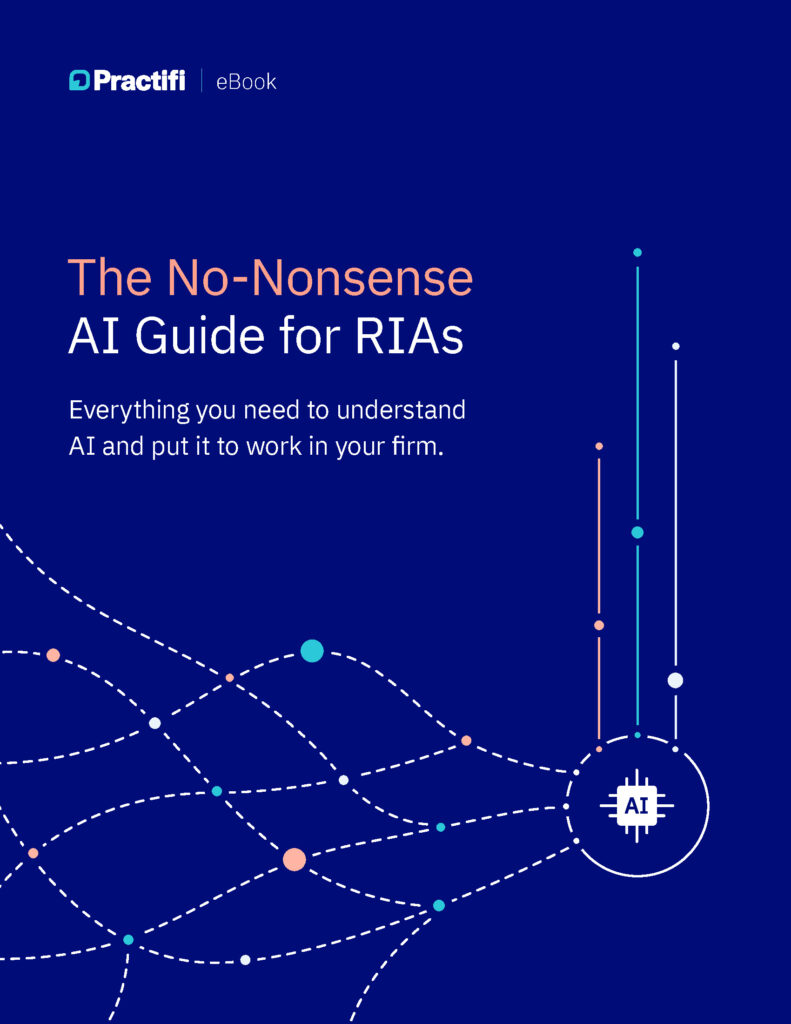
Our Vision for a Truly Conversational CRM
“Conversational CRM” is one of those terms that gives you pause. In a landscape filled with acronyms, platforms and shifting definitions, it’s not immediately clear what the phrase actually means, especially as it gains momentum in conversations about AI.
Is it a new kind of CRM? A smarter interface? A voice-enabled assistant with just enough intelligence to book meetings?
As AI becomes more visible in the advisor technology space, the idea of “conversational” systems is starting to take shape. But the meaning behind it is still unsettled. And in wealth management, where relationships drive results, how we define that term matters. Now is the time to unpack what “conversational” really signals, what it should mean for RIAs and why it’s showing up in CRM conversations in the first place.
What Everyone Gets Wrong About ‘Conversational’ Technology
“Conversational” is everywhere right now. It’s a catch-all for AI tools that can talk back —chatbots that simulate human tone, inboxes that generate smart replies, even voice assistants that can confirm an appointment or summarize an email thread. Say the word and it tends to evoke the same set of associations: quick interactions, automated scripts, maybe a touch of personalization. In most cases, it means making software feel friendlier without fundamentally changing how it works.
There’s nothing wrong with that, but in the context of client relationships, especially in wealth management, it misses the mark. Relationships in this industry aren’t built on convenience. They’re built on history, consistency and depth. A tool that answers questions or schedules follow-ups is helpful, but it’s not enough when an advisor’s value lies in understanding the full picture.
This is where the term starts to lose meaning. When “conversational” gets applied to systems that only handle transactional tasks, it risks lowering expectations. It suggests that as long as a CRM can respond with natural language or automate a message, it qualifies. But calling something conversational should imply more than the ability to reply. It should signal the ability to retain context, surface relevant insights, and support the advisor’s ability to show up informed, responsive and personal. If it can’t do that, it’s not truly participating in the relationship, it’s just echoing back inputs.
Firms exploring this space should be asking more. What does the system understand about the client? Does it know their goals, their preferences, their timeline? Can it connect past conversations to future actions, or does it just generate nice-sounding text?
The real value of conversation comes from memory and momentum. It’s the ability to retain what matters and use it to move relationships forward. That’s exactly where the current definition starts to fall short.
What Conversational CRM Means to Us
Let’s be clear on what we mean when we say Conversational CRM.
It’s a system that does more than store interactions. It captures context, recalls what’s important and helps advisors respond with the kind of relevance that keeps relationships strong over time. It pays attention to patterns, surfaces key details and supports real follow-through, not just data entry. The goal isn’t about dressing up old workflows with a friendlier interface. It’s about creating a system that works alongside the advisor. One that documents what’s happened, understands what’s changing and offers timely support without getting in the way.
That kind of capability is becoming essential. Advisors are working across more channels, with more clients, and higher expectations at every touchpoint. Growth is the easy part. What’s harder is keeping service personal when everything around it is moving faster. Meanwhile, AI has reached a point where it can do more than react. It can anticipate, contextualize and assist in ways legacy systems were never built to handle. And firms that want to stay ahead need tools that can evolve just as quickly as their clients’ needs do.
That’s the direction we’re heading. Not smarter software for its own sake, but a smarter system of support.
What a Conversational CRM Really Looks Like
What does this actually look like in practice? The strength of a Conversational CRM lies in how its parts work together — capturing context, prompting action and helping teams focus on what matters most.
It’s a platform that can:
- Suggest timely follow-ups based on meeting notes or recent activity
- Turn advisor input, typed or spoken, into structured tasks and next steps
- Surface past conversations so meetings never start cold
- Highlight life changes, portfolio shifts or key moments prompting meaningful action
- Coordinate tasks across the team without losing sight of the big picture
- Adapt to the advisor’s workflow, not the other way around
Some of these capabilities are already possible. Others are just starting to take shape through AI. What matters most is how seamlessly they integrate into the advisor’s flow —quietly improving the work, not interrupting it. At its core, a Conversational CRM helps advisors stay close to their clients, even as everything else scales. It gives teams the context they need, when they need it, cutting through the noise that makes most systems feel more like overhead than support.
Why Practifi Is Built for This Moment
CRMs weren’t always expected to do much more than track data and keep teams organized. But the moment we started asking them to support real client engagement, across more people, with greater complexity and higher expectations — everything changed.
That change isn’t something we’re waiting to react to. It’s been shaping how we build from the start. As AI matures and advisory firms seek smarter ways to scale, our focus remains the same: developing tools that respect the value of relationships and help advisors deliver more personalized services at scale. Not by replacing the advisor, but by removing the friction that gets in their way.
We believe a CRM should act more like a partner than just another platform. That belief drives how we think, what we prioritize and where we’re headed next.
We’re making sure your CRM is ready for it.












